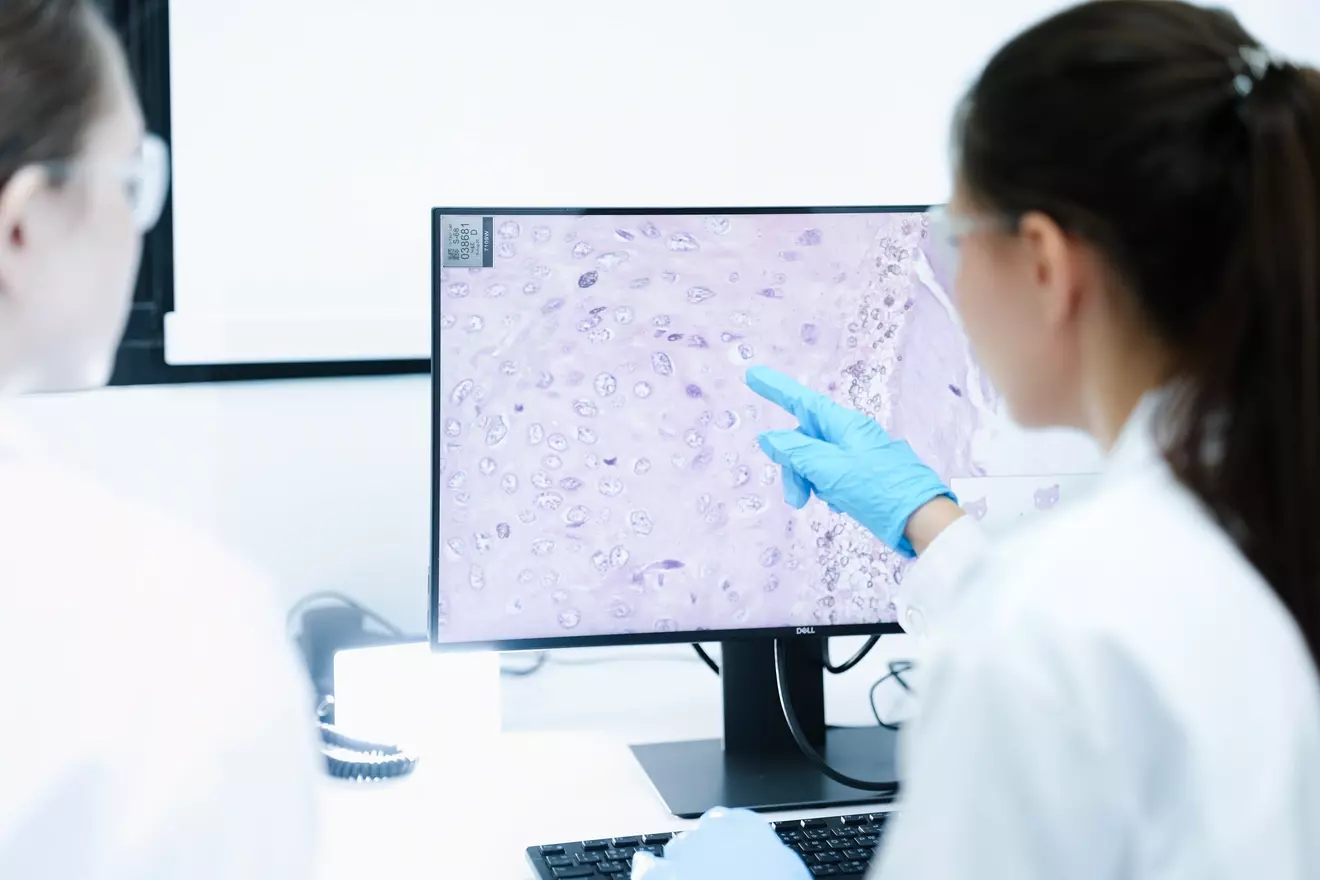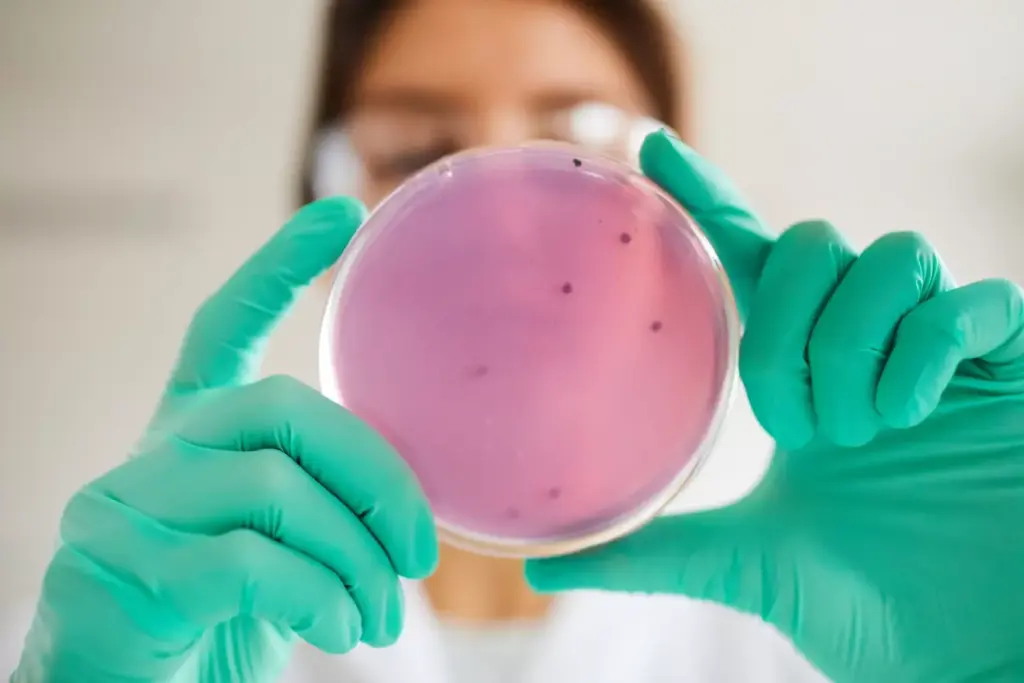Last Updated on November 26, 2025 by Bilal Hasdemir

T cells, also known as T lymphocytes, are key to the immune system’s fight against infections. They help coordinate immunity and destroy infected cells. At Liv Hospital, we understand how vital T cells are for health. We offer top-notch healthcare and support for patients from around the world.
T cells are a type of white blood cell that fights infections and diseases. Knowing how T cells work is important for creating effective treatments. We also explore the use of stem cells to boost immune health by making more T cells.
Key Takeaways
- T cells are a fundamental component of the immune system’s adaptive response.
- They play a vital role in coordinating immunity and destroying infected cells.
- Liv Hospital is committed to providing world-class healthcare for international patients.
- Understanding T cells is essential for developing effective treatments.
- Stem cells can be used to enhance immune health by creating immune cells like T cells.
The Fundamental Role of T Cells in Immunity
Learning about T cells helps us understand our immune system. They are key to the adaptive immune response. T cells, or T lymphocytes, are a type of white blood cell. They are vital for fighting infections and diseases.
T Cells as Key Players in Adaptive Immunity
T cells are essential in the adaptive immune system. This system involves T cells and B cells. It helps the body remember pathogens and fight them better next time. T cells are defined by their ability to recognize and respond to specific antigens, making them key players in this process.
T cells have several important roles. They recognize antigens, activate other immune cells, and kill infected cells. They also send chemical signals to start the immune response.
How T Cells Differ from Other Immune Cells
T cells are different from B cells and macrophages. While B cells make antibodies, T cells interact with infected cells or send signals. T cells are capable of distinguishing between self and non-self cells, which is key to avoiding autoimmune diseases.
A key feature of T cells is their ability to remember past infections. This is why vaccines work and why we have long-term immunity.
| Cell Type | Function | Mode of Action |
|---|---|---|
| T Cells | Recognize and kill infected cells or produce chemical signals | Direct interaction with infected cells or antigen presentation |
| B Cells | Produce antibodies to neutralize pathogens | Antibody production |
| Macrophages | Engulf and digest cellular debris and pathogens | Phagocytosis |
Understanding T cells shows their vital role in our immunity. They are key to protecting us from many pathogens.
T Cells Definition: Understanding These Vital Immune Components
T cells are key players in our immune system. They help protect us from infections and diseases. These cells are a type of lymphocyte that is vital for cell-mediated immunity.
Biological Characteristics of T Lymphocytes
T lymphocytes, or T cells, come from hematopoietic stem cells in the bone marrow. They mature in the thymus, which is where they get their name. T cell development goes through stages like positive and negative selection. This ensures they can recognize self-MHC molecules and fight foreign antigens.
T cells can tell self from non-self antigens. They play a big role in cell-mediated immunity. They also remember specific pathogens, helping us fight infections over time.
| Characteristic | Description |
|---|---|
| Origin | Derived from hematopoietic stem cells in the bone marrow |
| Maturation | Mature in the thymus |
| Function | Play a central role in cell-mediated immunity |
| Antigen Recognition | Can distinguish between self and non-self antigens |
Historical Context: Discovery and Naming of T Cells
The discovery of T cells started in the 1960s. Researchers found out the thymus is key in lymphocyte development. The term “T cell” was used because they mature in the thymus. A lot of research has been done to understand their role in the immune system.
Identifying T cells was important for understanding how our immune system works. Finding different types of T cells, like helper and cytotoxic T cells, helped us see their roles in immunity.
The Origin and Development of T Cells
T cells are key to our immune system. They start from stem cells in the bone marrow. The journey of T cells is complex, with many stages and selection processes.
From Bone Marrow to Thymus: The T Cell Journey
The journey of T cells starts in the bone marrow. Here, stem cells turn into lymphoid progenitor cells. These cells then move to the thymus, a gland behind the sternum, for development and maturation.
The Role of the Thymus: The thymus is vital for T cell development. It provides the right environment for T cell maturation and selection. In the thymus, immature T cells learn to recognize self-MHC molecules and get rid of those that react against self-antigens.
T Cell Maturation and Selection Process
T cell maturation includes positive and negative selection. Positive selection makes sure T cells can recognize self-MHC molecules. Negative selection removes T cells that react against self-antigens, preventing autoimmunity.
| Stage | Description | Location |
|---|---|---|
| 1. Lymphoid Progenitor Cells | Stem cells differentiate into lymphoid progenitor cells | Bone Marrow |
| 2. Immature T Cells | Lymphoid progenitor cells migrate and become immature T cells | Thymus |
| 3. Positive Selection | T cells undergo positive selection to ensure recognition of self-MHC | Thymus |
| 4. Negative Selection | T cells that react against self-antigens are eliminated | Thymus |
| 5. Mature T Cells | Surviving T cells mature and are released into the circulation | Thymus |
Understanding T cell origin and development is key to their role in immunity. Their complex development ensures they can fight off pathogens without causing autoimmunity.
The Structure of T Cells
To understand how the immune system adapts, we must look at T cells. T cells, or T lymphocytes, are a key part of our immune response. Their design lets them spot and fight specific threats.
T Cell Receptors and Their Function
The T cell receptor (TCR) is at the core of T cell work. It’s a group of proteins on the T cell’s surface. The TCR finds and grabs onto specific threats, starting the immune fight.
The TCR has different parts that work together to find and bind to threats. This isn’t just a simple fit; it’s a complex dance with other molecules. This dance is key to turning on T cells and starting the immune response.
Surface Markers and Molecular Components
T cells also have special markers on their surface. CD4 and CD8 are two big ones, telling us if a T cell is a helper or a killer. These markers help T cells talk to other immune cells.
Other molecules, like co-stimulatory and adhesion molecules, also help T cells work. These help T cells and antigen-presenting cells talk better, making the immune response stronger. Knowing about these parts helps us see how T cells get activated and controlled.
Looking at T cells’ structure, including their receptors and markers, shows their vital role in our defense. This knowledge is key for creating new treatments that boost T cell function.
Major Types of T Cells and Their Functions
T cells are a key part of our immune system. They come in different types, each with its own job. These jobs help keep us healthy. Knowing how they work is important for understanding how our body fights off sickness.
Helper T Cells (CD4+): The Immune System Coordinators
Helper T cells, or CD4+ T cells, are important for leading the immune response. They help activate other immune cells, like B cells and cytotoxic T cells. They do this by making specific signals that tell other cells what to do.
For example, they help B cells make antibodies and activate cytotoxic T cells to kill infected cells. This is why Helper T cells are so important. Without them, our immune system can’t work right, like in HIV/AIDS.
Cytotoxic T Cells (CD8+): The Cellular Assassins
Cytotoxic T cells, or CD8+ T cells, kill infected cells or tumor cells. They find infected cells by recognizing specific antigens on the cell surface. Once they find them, they release substances that make the infected cells die.
This is key in fighting viruses and cancer. Cytotoxic T cells are essential for controlling infections and keeping cancer in check.
Regulatory T Cells: Maintaining Immune Balance
Regulatory T cells (Tregs) keep our immune system in balance. They stop the immune system from getting too strong or attacking itself. They do this by making substances that calm down other immune cells.
Tregs are vital for preventing autoimmune diseases. They help our body not attack itself.
Memory T Cells: Providing Long-term Protection
Memory T cells remember specific pathogens and respond quickly if they come back. They provide long-term protection against infections. Both CD4+ and CD8+ memory T cells are important for vaccine effectiveness.
| T Cell Type | Primary Function | Key Characteristics |
|---|---|---|
| Helper T Cells (CD4+) | Coordinate immune response | Produce cytokines, assist in B cell activation |
| Cytotoxic T Cells (CD8+) | Kill infected cells or tumor cells | Recognize antigens on MHC class I, release cytotoxins |
| Regulatory T Cells | Maintain immune balance | Suppress excessive immune activation, produce anti-inflammatory cytokines |
| Memory T Cells | Provide long-term immunity | Remember specific pathogens, mount rapid response upon re-exposure |
In summary, T cells work together to protect us. Each type has its own job. Understanding these jobs helps us appreciate how our immune system works and how to treat immune disorders.
How T Cells Recognize and Respond to Threats
T cells play a key role in fighting infections. They do this by recognizing and responding to threats. This process involves several important steps and mechanisms.
Antigen Recognition Mechanisms
T cells use their T cell receptors (TCRs) to find specific antigens. These antigens are presented by major histocompatibility complex (MHC) molecules on antigen-presenting cells (APCs). This interaction is vital for starting the immune response.
Key steps in antigen recognition include:
- The processing and presentation of antigens by APCs.
- The binding of antigen peptides to MHC molecules.
- The recognition of the antigen-MHC complex by TCRs on T cells.
The T Cell Activation Process
Activating T cells is a complex process. It requires the recognition of antigens and co-stimulatory signals. These signals come from the interaction between co-stimulatory molecules on APCs and their ligands on T cells.
The T cell activation process involves:
- The recognition of antigens by TCRs.
- The provision of co-stimulatory signals.
- The production of cytokines and the proliferation of T cells.
Understanding these mechanisms helps us see how T cells protect us. It also shows how problems can lead to immune disorders.
T Cells in Action: The Immune Response
T cells are a type of white blood cell that plays a key role in cell-mediated immunity. This is a vital part of our immune response. It’s important to understand how T cells help protect us.
Cell-Mediated Immunity Explained
Cell-mediated immunity doesn’t use antibodies. Instead, it uses T cells to fight off infections. T cells can kill infected cells or send signals to other immune cells.
Key aspects of cell-mediated immunity include:
- Direct killing of infected cells or tumor cells
- Activation of other immune cells through cytokine signaling
- Coordination of an effective immune response
Cytokine Production and Signaling
Cytokines are molecules that help coordinate the immune response. T cells make cytokines when they recognize an antigen. These cytokines then tell other immune cells what to do.
| Cytokine | Function | Role in Immune Response |
|---|---|---|
| IL-2 | T cell growth factor | Promotes T cell proliferation |
| IFN-γ | Activates macrophages | Enhances killing of intracellular pathogens |
| TNF-α | Induces inflammation | Recruits immune cells to the site of infection |
Understanding T cells and cytokines helps us see how our immune system works. This knowledge is key for creating new treatments. It helps us use the immune system to fight diseases.
T Cells in Disease Prevention and Control
T cells are key to our immune system, fighting off many pathogens. They can spot and attack specific invaders, helping us stay healthy.
Fighting Viral Infections
T cells are vital in the battle against viruses. Cytotoxic T cells (CD8+) kill infected cells directly. Helper T cells (CD4+) help by getting other immune cells ready to fight.
For example, against HIV, which attacks CD4+ T cells, our immune system depends on these cells. Studies show that a strong T cell response can lead to better health outcomes.
“The presence of HIV-specific CD8+ T cells is associated with control of viral replication and delayed disease progression.”
Role in Bacterial and Fungal Defense
T cells are not just for viruses; they also fight bacteria and fungi. Some of these invaders can dodge our first line of defense. That’s when T cells step in.
| Pathogen Type | T Cell Response | Outcome |
|---|---|---|
| Bacterial | Activation of macrophages by helper T cells | Effective clearance of bacteria |
| Fungal | Cytokine production by T cells to recruit other immune cells | Control of fungal growth |
T Cells and Parasitic Infections
T cells are also key in fighting parasites. For example, in malaria, they help by making cytokines. These cytokines get other immune cells to remove the parasite.
In summary, T cells are essential in fighting off diseases like viruses, bacteria, fungi, and parasites. Their skill in recognizing and fighting specific threats is vital to our immune system’s success.
When T Cells Malfunction: Immune Disorders
T cells are key to our immune system. When they don’t work right, we can get sick. T cells help fight off infections, and problems with them can cause health issues.
Autoimmune Diseases and T Cell Dysregulation
Autoimmune diseases happen when our immune system attacks us. T cell problems are a big part of this. For example, in rheumatoid arthritis, T cells cause inflammation and damage joints.
In multiple sclerosis, T cells harm the nerve fibers’ protective layer. This disrupts communication between the brain and the rest of the body.
| Autoimmune Disease | T Cell Involvement | Primary Symptoms |
|---|---|---|
| Rheumatoid Arthritis | T cells contribute to joint inflammation | Joint pain, swelling, and stiffness |
| Multiple Sclerosis | T cells attack the protective nerve covering | Numbness, weakness, vision problems |
Immunodeficiency Conditions Affecting T Cells
Immunodeficiency makes it hard for our body to fight off infections. T cells are important here. Their problems can lead to serious weaknesses in our immune system.
HIV/AIDS is a big example. It attacks and kills CD4+ T cells. This weakens our immune system, making us more likely to get sick or develop cancer.
Understanding T cell problems is key to finding treatments for these diseases. By studying how T cells go wrong, we can tackle autoimmune and immunodeficiency diseases better.
T Cells in Modern Medicine and Research
T cells are changing modern medicine in big ways. They are helping us treat diseases in new and exciting ways. This is thanks to the progress in T cell research.
Cancer Immunotherapy and CAR-T Cell Therapy
Cancer immunotherapy is a new and powerful treatment. It uses the body’s immune system to fight cancer. T cells are key in this fight, making treatment more targeted and potentially life-saving.
CAR-T cell therapy is a great example. It makes T cells better at finding and killing cancer cells. This personalized treatment has shown great results in trials.
T Cell-Based Treatments for Infectious Diseases
T cells are also being used to fight infectious diseases. Researchers are working on new treatments that use T cells to better fight off infections. This could be a big step forward in treating diseases.
These treatments aim to boost the body’s immune response. This makes fighting off infections more effective and targeted.
Emerging T Cell Technologies and Future Directions
The study of T cells is moving fast, with new technologies on the horizon. These include better ways to engineer T cells and improve their function. As we learn more about what are T cells function, we find new ways to help patients.
These new technologies could help treat many diseases. They could even make vaccines more effective.
| T Cell Application | Description | Potential Benefits |
|---|---|---|
| Cancer Immunotherapy | Modifying T cells to target cancer cells | Targeted cancer treatment, possible cure |
| Infectious Disease Treatment | Harnessing T cells to fight infections | Effective against viral, bacterial, and fungal infections |
| T Cell Engineering | Improving T cell function and persistence | Enhanced therapeutic efficacy, wider applications |
As research keeps moving forward, we’ll see even more uses for T cells in medicine. The future looks bright for T cell-based treatments. They could greatly improve how we treat diseases.
Conclusion: The Essential Role of T Cells in Human Health
T cells are key to our immune system. Knowing how they work helps us see their importance in keeping us healthy. They are a type of lymphocyte that fights infections and diseases.
At Liv Hospital, we know how vital T cells are. We invest in the latest T cell research and immunotherapy. This helps us understand their role in keeping us safe from illnesses.
As scientists learn more about T cells, we see new ways to treat diseases. This knowledge helps us improve care and outcomes for patients. It’s a step towards better health for everyone.
What is the definition of T cells?
T cells are a key part of our immune system. They help fight off infections and remember past threats. This way, they keep us safe from harm.
What do T cells do?
T cells find and attack specific germs. They also send signals to other immune cells. This helps us stay protected against future sicknesses.
How do T cells differ from other immune cells?
T cells are different from B cells and macrophages. They have unique jobs and ways of working. This makes them important for our body’s defense.
What is the origin of T cells?
T cells start from stem cells in the bone marrow. They grow up in the thymus. There, they learn to do their job right.
What are the different types of T cells?
There are several types of T cells. Helper T cells, cytotoxic T cells, regulatory T cells, and memory T cells. Each type does something special to help us stay healthy.
How do T cells recognize antigens?
T cells find antigens with their T cell receptors. These receptors match up with specific germs. This starts the T cell’s action.
What is the role of T cells in disease prevention?
T cells are key in fighting off viruses like HIV and COVID-19. They also protect us from bacteria, fungi, and parasites. This is why they’re so important for keeping us healthy.
What happens when T cells malfunction?
If T cells don’t work right, we can get sick. This can lead to autoimmune diseases like rheumatoid arthritis. It can also cause conditions like HIV/AIDS.
How are T cells used in modern medicine?
T cells are used in cancer treatments, like CAR-T cell therapy. They also show promise in fighting off infections. New technologies are being explored to use T cells in even more ways.
What is the significance of T cells in human health?
T cells are essential for our health. They help us fight off diseases and stay healthy. More research is needed to fully understand their role and how we can use them to help us even more.
References
- Encyclopædia Britannica. T-cell. Available from: https://www.britannica.com/science/T-cell
- Sun, L., Su, Y., Jiao, A., Wang, X., Zhang, B., et al. T cells in health and disease. Signal Transduction and Targeted Therapy. 2023. Available from: https://www.nature.com/articles/s41392-023-01471-y
- National Cancer Institute. T cell (Cancer Terms Dictionary). Available from: https://www.cancer.gov/publications/dictionaries/cancer-terms/def/t-cell
- News-Medical. What are T Cells? Available from: https://www.news-medical.net/health/What-are-T-Cells.aspx
- MD Anderson Cancer Center. T cells, B cells and the immune system. Available from: https://www.mdanderson.org/cancerwise/t-cells–b-cells-and-the-immune-system.h00-159465579.html








